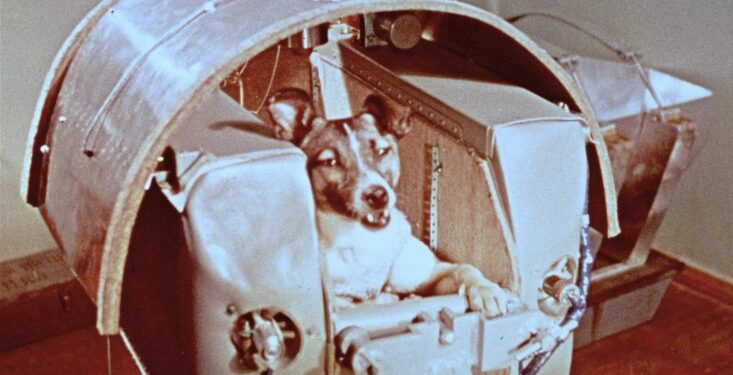Sputnik 2 was an iconic milestone in space exploration, launching on November 3, 1957, and forever etching its mark in history for a somber yet significant reason—it carried the first living being to orbit the Earth. Launched by the Soviet Union, Sputnik 2 held a passenger unlike any other: a dog named Laika.
Laika, a stray dog found on the streets of Moscow, was selected to be the occupant of this pioneering spacecraft. Her journey into space was a testament to human ambition and technological progress. However, it was also marked by controversy and ethical concerns as the technology to safely return living creatures from space hadn’t yet been developed.
As Sputnik 2 successfully entered orbit, Laika became the first animal to journey into space. Regrettably, the spacecraft was not designed for her return, and it was known from the outset that she wouldn’t survive. Laika’s journey paved the way for future human space exploration but raised ethical questions about the treatment of living beings in the pursuit of scientific advancement.
This historic event highlighted both the achievements and ethical dilemmas associated with space exploration. Laika’s sacrifice played a crucial role in advancing our understanding of space travel, paving the way for the safety protocols and ethical considerations that followed in subsequent missions.
The legacy of Sputnik 2 and Laika endures as a reminder of the sacrifices made in the pursuit of knowledge and the continual need for ethical considerations in scientific endeavors.



Recent Comments